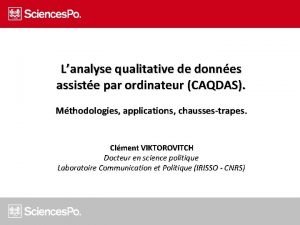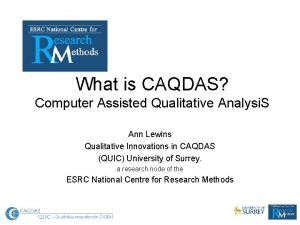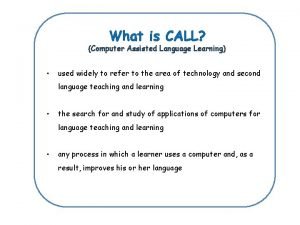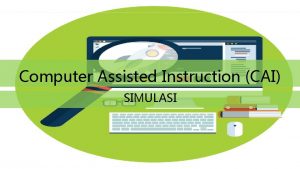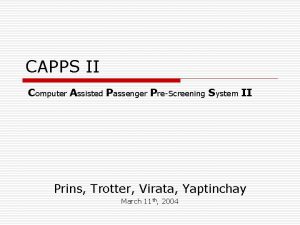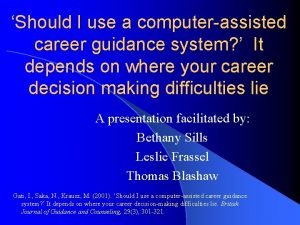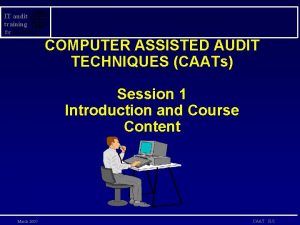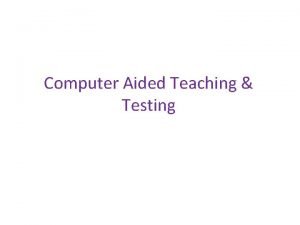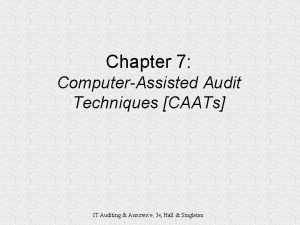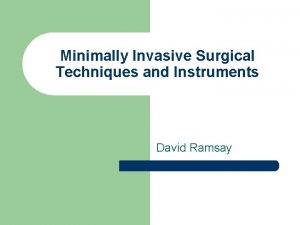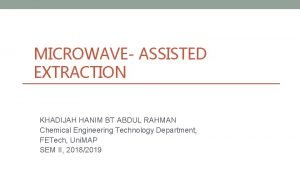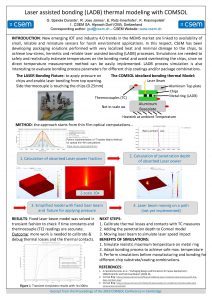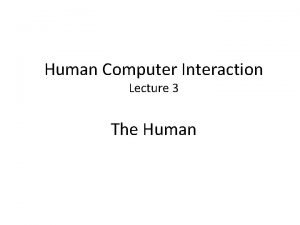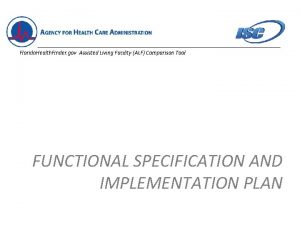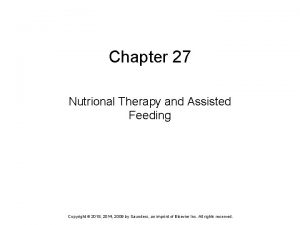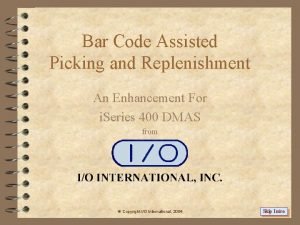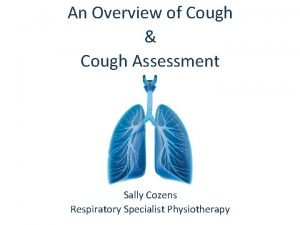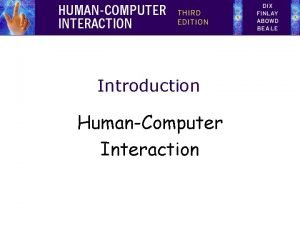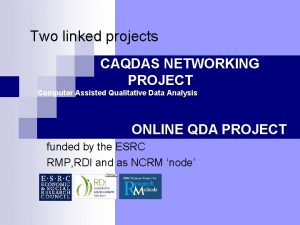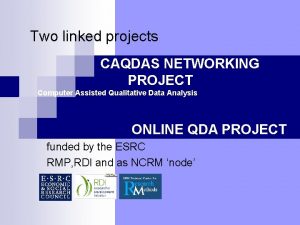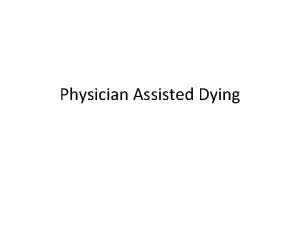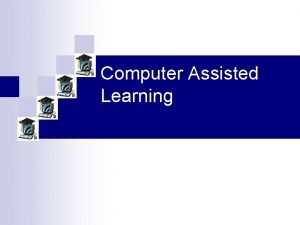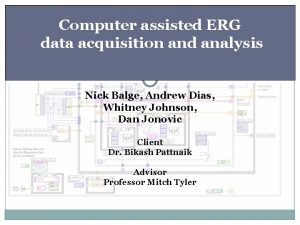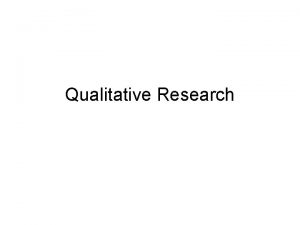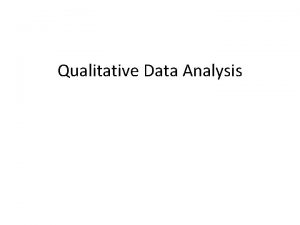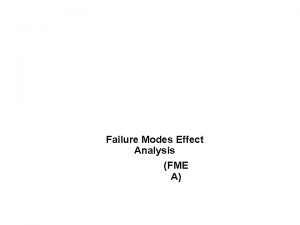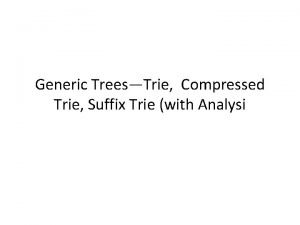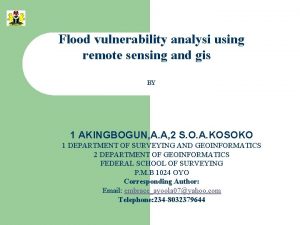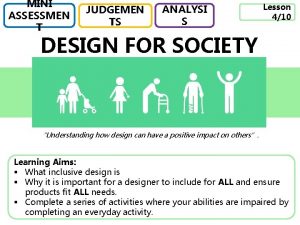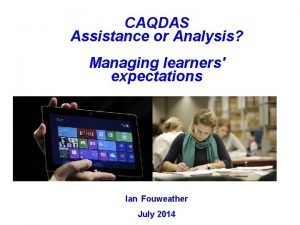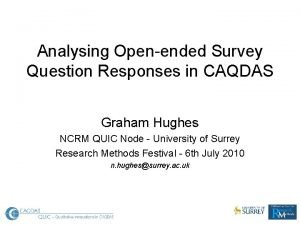What is CAQDAS Computer Assisted Qualitative Analysi S






















- Slides: 22

What is CAQDAS? Computer Assisted Qualitative Analysi. S Ann Lewins Qualitative Innovations in CAQDAS (QUIC) University of Surrey. a research node of the ESRC National Centre for Research Methods

this session will. . • Provide context • Rough out the historical debate • Attempt to define what CAQDAS has come to mean – What it is and what it (possibly) isn’t • How CAQDAS has developed • Demonstrate as much as possible – Illustrate some key features

the acronym. . . . Computer Assisted Qualitative Data Analysi. S Based on and built around…. . • the more interpretive approaches • qualitative analysis of qualitative data • traditional craft methods using cut and paste, annotating, index cards • categorising – coding - indexing

analytic contexts Methodology 10/26/2020 ST R A TE G Y Participant observation In depth interviewing Unstructured Semi structured Structured A N A LY TI C Ethnography Action research Phenomenology Hermeneutics Biographic Discourse Grounded Theory Etc. , etc. Open ended questions Documentary analysis Media Official Narrative analysis Field Methods © Ann Lewins - CAQDAS Networking Project 4

qualitative data : types of data? • • • Field notes Summaries Abstracts Interview transcripts Survey - open ended question data • Discourse: news political • Bibliographic - lists 10/26/2020 • • Video Film Tapes: oral history Handwritten letters Handwritten diaries Paintings Photography ………… and the rest Field Methods © Ann Lewins - CAQDAS Networking Project 5

key statements. . . . • There are many approaches to analysing qualitative data • CAQDAS packages don’t provide a methodology • CAQDAS packages don’t do the thinking • Researcher does all the thinking • The software will help manage data, thinking, questions and findings

background to development. . . • 1960’s mechanisation - lexical counting and sorting of words The General Enquirer • Used widely in Humanities. . History, Linguistics, Literature • Social Science researchers remained cautious (suspicious) until mid. . . • . . 1980’s qualitative social researchers see possibilities • Change in perceptions and development. Computers not just number crunchers • Development of PC’s • Recommendations that computers would be used – however vague. . . • Optimists focused on improved rigour • Pessimists were concerned with alienation from data

managing interpretation – first developments • Mid 1980’s new software tools emerge designed to assist the interpretive approaches to qualitative data Hyper. Research (Mac) ATLAS. ti (PC Dos) KWALITAN (PC Dos) MAX (PC Dos) NUD*IST (Mac) The ETHNOGRAPH (PC Dos) Hypersoft (Apple Macintosh) Scott Kinder et al (USA), Thomas Muhr (Germany), Lyn & Tom Richards (Australia - NVivo) Vincent Peters (Netherlands) John Seidel (USA) Ian Dey (UK) Udo Kuckartz (Germany- MAXqda 2010) • Qualitative approaches to qualitative data rather than previous quantitizing qualitative data • Developers were social or political science academics – Tendency to be associated with certain methodologies - GT? • Becomes the focus of the term ‘CAQDAS’ • Windows versions start appearing 1994 • Developers go commercial 1995 + – distance themselves from particular methods/methodologies

CAQDAS until 1994. . • • • Very difficult data preparation (limited formats) DOS operating systems Lack of support –training not widely available Improved management of larger datasets Code and Retrieve Rudimentary organisation based on variables Interrogation of data to produce filtered reports Basic memo tools Better access to all data

acknowledging resistance. . • 1995 Fielding & Lee acknowledging one side of topical debate (at the time of writing they were initiating a project to support potential users of CAQDAS) “Letting the genie out of the bottle. . . might change the craft of methodology in unexpected and unwelcome ways” • 1994 + CAQDAS Networking Project was funded by the ESRC for 15 years. . . not to persuade but to help make an informed decision about software and support users http: //caqdas. soc. surrey. ac. uk

constructive & prophetic views. . . • 1989 Ragin & Becker argued that with PC developments. . . researchers would find traditional gulf between variable oriented quantitative and case oriented qualitative researchers would narrow. • Now it is standard to import quantitative data to enable further interrogation of qual data • Mixed methods projects increasing • Research such as QUIC & Timescapes seeking to narrow gap

Working Demonstration of MAXqda/NVivo to illustrate basic code and retrieve functions combining with quant data for further interrogation

MAXqda 10 Interface Showing coding margin, memos flagged & interactive code and retrieve

Nvivo 8 Showing coded margin and annotations bar

. . . constructive & prophetic • 1995 Agar’s influential essay – “ The Right Brain Strikes Back” (in Fielding & Lee 1995) used his research in Austria from 1989 to describe his qualitative needs in the context of what wasn’t yet available in software. • Research into court transcripts: suspicions that the merchant ship Lucona was deliberately scuttled by its owners. – Simple code and retrieve of The Ethnograph software of the time was limiting – Needed to see large stretches of data simultaneously – Visual need to draw a coloured network of connections – The essay itself sparked ideas in software development • A spiral of methodological debate, user-influenced software development, technological advance, usage, development of analytic techniques – – qual-software discussion list

• Working demonstration of ATLAS. ti stretches of data – re-arranged links made – either between bits of data or codes using new technology to improve access

ATLAS. ti 6 showing a Network. . User has dragged passages into network Recording thoughts in memo Linking passages Linking codes to text

managing work in different ways… • • • Thematic coding may or may not be relevant Use coding as practical navigation devices Stay at text level Make links between segments to follow a trail Use comments to add rich description to segments of data • Link between multimedia and text • Step back - map connections in a visual way

integration of different data, more media • • Word files Pdf files (varies) Quantitative data Handling of Survey data (open ended questions) • Multimedia – graphic audio-visual. . Working demonstration

Transana – example of 10/26/2020 low cost, open source Field Methods © Ann Lewins - CAQDAS Networking Project

Summarizing CAQDAS tools Figure adapted from Lewins & Silver 2007

Resources CAQDAS Networking Project http: //caqdas. soc. surrey. ac. uk Online QDA http: //onlineqda. hud. ac. uk ESRC NCRM research node, QUIC http: //caqdas. soc. surrey. ac. uk/quic. html References – recent • di Gregorio, S & Davidson J (2008) Qualitative Research for Software Users, Mc. Graw Hill, Open University Press, UK – (planning – project set up – teams -various software) • Lewins, A. , & Silver, C. (2007) Using Qualitative Software: A Step by Step Guide, Sage Publications – (qualitative task based chapters with step by step – various software) References – seminal • Agar, M. The Right Brain Strikes Back in Fielding and Lee (1994) • Fielding, N. & Lee, R. (1995 2 ed) Using Computers in Qualitative Research, Sage Publications • Kelle U. (1995) Computer Aided Qualitative Data Analysis, Sage Publications • Miles, M. B & Huberman, (1984) Qualitative Data Analysis: A Source Book of New Methods Sage Publications • Miles, M. B & Huberman, (1994) Qualitative Data Analysis: An Expanded Source Book Sage Publications • Ragin, C. C. & Becker, H. S. How the Microcomputer is changing our habits in G. Bank et al (eds) (1989) New Technology in Sociology: Practical Applications in Research and Work. Transaction Publishers
 Codage assistée par ordinateur
Codage assistée par ordinateur Caqdas meaning
Caqdas meaning What is computer assisted language learning
What is computer assisted language learning Oedmodo
Oedmodo Contoh cai
Contoh cai Computer assisted passenger prescreening system
Computer assisted passenger prescreening system Computer assisted guidance systems
Computer assisted guidance systems Computer assisted audit techniques slideshare
Computer assisted audit techniques slideshare Catt program
Catt program Types of computer assisted audit techniques
Types of computer assisted audit techniques Hidden costs of assisted living
Hidden costs of assisted living Robot assisted surgery
Robot assisted surgery Microwave assisted extraction
Microwave assisted extraction Laser assisted bonding
Laser assisted bonding Models of ltm - frames
Models of ltm - frames Florida health finder alf
Florida health finder alf Chapter 27 nutritional therapy and assisted feeding
Chapter 27 nutritional therapy and assisted feeding Assisted picking
Assisted picking Cofflator
Cofflator American service sequence
American service sequence What part
What part Park place assisted living seattle
Park place assisted living seattle Information reproduced from memory can be assisted by cues.
Information reproduced from memory can be assisted by cues.
